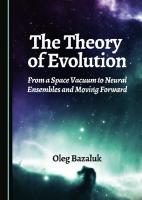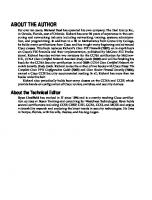Configuration Space of Moving Object
Configuration space methods are commonly used in motion planning algorithms. Algorithms for defining the configuration s
309 31 307KB
English Pages [11]
Recommend Papers
File loading please wait...
Citation preview
18-th International Conference SAER-2004
30
CONFIGURATION SPACE OF MOVING OBJECTS Kaloyan Yankov Medical Faculty, Thracian University, Armejska str., 11, Stara Zagora 6000, Bulgaria e-mail: [email protected] Abstract: Configuration space methods are commonly used in motion planning algorithms. Algorithms for defining the configuration space of moving objects use Minkowski sum, but it is applicable only for convex objects. If the obstacle is non-convex, triangle subdivision to convex objects must be performed. This complicates the algorithms for object movement planning. In the present paper is presented an algorithm for defining configuration space which is applicable for non-convex objects. Key words: Configuration space, Collision avoidance, Computer Aided Design, Robotics.
1. INTRODUCTION Preventing collisions between a moving object and a set of obstacles is needed in planning technological trajectories “pick and place”, assembling details in the process of computer aided design and arranging machines and equipment in a workcell. It is also used in planning the movement of robots among obstacles, in creating software for adaptive robots and systems with artificial intelligence, in computer aided design and in computer graphics animation. The class of problems that involves finding a collision-free path for a moving object among a set of obstacles is called collision-free path planning. Two main approaches exist for solving the problem of collisionfree movement. • Collision detection. [1-6]. A trajectory is generated for the moving object, and the possibility collisions with obstacles is checked for this trajectory. If such possibility is detected, the trajectory is modified or it is rejected and a new one is generated. Applying collision detection is done by using algorithms that estimate collisions between a model of the moving object and models of the obstacles. According to the obtained data the motion of the real object is formulated. • Collision avoidance. [7-9]. A probable trajectory aimed to avoid collision is generated for the movement of the object among the obstacles. Contact among models of the objects is not estimated. The most frequently used approach is the one of free configuration space. It is formulated by Lozano-Perez [10], and it is the basis of lots of investigations in this field. An enormous spread of publications with regard to object motion planning has been published in the past decades with ever increasing interest in this subject. Nonetheless, the overall problem is far from being solved of the real world. This paper presents a solution of the problem for collision avoidance which is used in the system CINDY for simulation of robots [11]. 2. CONFIGURATION SPACE Let A be a single movable rigid object. The spatial region that can be accessed by the object A within a Euclidean space RN, (N = 2 or 3) is limited. That area is called workspace and denoted by W . If the object A is a compact subset of W, a configuration of A is a specification of the position and the orientation defined by a single 6-dimensional vector with respect to FW, where FW is a Cartesian coordinate system:
18-th International Conference SAER-2004
31
Q = (q1, q2, q3, q4, q5, q6)T (1) The subset of W occupied by A at a configuration q is denoted by A(q). The configuration space of A is the space denoted by Cspace, with all possible configurations of A. (2) Cspace(A) = {q: qimin ≤ q ≤ qimax, i=1,2,…,6} min max The restrictions [qi , qi ] can be due to constructive or functional characteristics or can follow neighbourhood features. For instance, the terrain upon which a car is moving defines the vertical translation for the car. A manipulated object has limitations resulting from the mobility of the end-effector that manipulates it. Let O1 , , On be fixed rigid objects distributed in W. The Oi are called obstacles and they are closed subsets of W. Each obstacle Oi maps in Cspace to a region, called C-obstacle: (3) Cobst(Oi) = {q∈ Cspace | A(q) ∩ Oi ≠ ∅} The union of all the C-obstacle is the C-region obstacle: n
U C obst (O i )
(4)
i =1
The subset of Cspace consisting of all the configurations where the A(q) has no contact or intersection with the obstacles in W is called free space and is denoted by Cfree.
(O ) = {q ∈ C : A(q) ∩ (U O = ∅)} (5) free space i =1 obst i space i i =1 The fundamental task of any motion planning system is to connect a given start position and a goal position in a free configuration space Cfree with a motion that does not lead to a collision of the object A with the static obstacles Oi within the workspace W. The general idea how to find Cfree is to expand the obstacles and to shrink the moving object to a reference point R∈A. The reference point R will always be a safe distance away from each obstacle due the growing step of each obstacle. Thus the path planning problem reduces to finding a safe path for a point among a set of pseudo obstacles [12]. A graph search technique can be used to find a safe path for the object. This way expanded obstacles define C-forbidden. The expanding of the obstacles is obtained by applying Minkowski sum [13, 14]. Given two convex objects O1 and O2, their Minkowski sum O1 ⊕ O2 is defined as the set of all vector sums generated by all pairs of points in O1 and O2, respectively: O1 ⊕ O2 = { a +b | a ∈ O1; b ∈ O2 } To simplify the computation if non-convex objects are available, each non-convex object is subdivided into convex objects, and a convex Minkowski sum is computed for each pair of convex objects. The algorithm for expansion used by the authors working on the problem is the following. 'Visibility' of a side of the obstacle from the point R is defined. If the straight-line segments connecting the ends of the side of the obstacle with the point R do not cross the obstacle, the side is visible (Fig.1). Let dRij be the absolute distance from the reference point R to the j-th side Sj of the obstacle Оi and dQpj be the C
=C
n
\ UC
n
32
18-th International Conference SAER-2004
distance from the vertex Qp∈A to Sj. The sides of the obstacles are divided into three types (Fig.2). А) The side Sj of the obstacle is 'visible' from the reference point R and its еxtension does not cross A. The expansion is: (6a) DA(Sj) = dRij - min(dQpj ) B) The side Sj of the obstacle is 'visible' from the reference point R and its еxtension crosses A. (6b) DB(Sj) = dRij + max(dQpj ) Qp and R lie at different sides of Sj. C) The side Sj of the obstacle is not 'visible' from the point R. (6c) DC(Sj) = max(dQpj ) - dRij The algorithm for finding the 'visibility' of the sides of the obstacles is applicable only to convex polygons. It they are non-convex, it is necessary to present them as a union of convex ones using triangle subdivision. Triangle subdivision of solid models is cumbersome to realize and complicates the algorithms [15]. Dividing the obstacle sides to three types is a serious drawback, because it depends on the mutual position of the moving object and the obstacle. This paper presents an approach for finding Cforbidden, which does not require defining side type and can be applied in the same way to both convex and non-convex polygonal/polyhedral objects. This approach solves the problem with finding 'visibility' and performing triangle subdivision. 3. CONFIGURATION SPACE OF NON-CONVEX OBSTACLES 3.1. Geometrical model of an object Geometrical models are required to represent the rigid bodies of the real world. The geometrical model of an object O will be denoted as GO. A desirable property of the geometrical model is to bind the real object O, e.g. all points of O are included in Go. This is especially required for motion planning as the absence of collision for a bounding geometrical model assures the absence of collision for the real object. To put it formally, a geometrical model Go is called bounding (Go bounds O) if {p | p ∈ O} ⊆ GO where the inclusion operation is used for all points within the projection of the volume described by the model Go and the real points within O. Let F(p) be an analytical function in RN. A halfspace may be defined as a subset of Euclidian space RN: (7) H(p)={ p: F(p) ≤ 0 } N Let an intersection of halfspaces defines closed and limited set of points in R . This set of points is the geometrical model Go. The function F(p) identifies a face of the model Go. F(p) is called a bearer of the face. The set of these faces defines the boundary dGo of O. They should be oriented so that O remains in their negative halfspace: (8) O(p) = {p: Fi(p) ≤ 0, i=1,2...} Thus the main requirement when creating geometrical model of objects is the algebraic equations of the faces for internal points on the modeled object to have negative values. To simplify the model it is accepted the faces to be plane in the three-dimensional space and straight lines in the twodimensional space. The geometric modeling system ARCHIMED satisfies these requirements [16]. 3.2. Object Expansion The strict orientation of the equations of the bearers of the model gives the opportunity to define the oriented distance from a point to a face of an obstacle. If a point p is in the negative halfspace of a bearer, the distance to the bearer F(p) will have a negative sign. Defining ‘visibility’ of a side of an obstacle from point R is simple: R is visible ⇔ F(R) > 0 In this work the quality ‘visibility’ is not used to expand obstacles. It is necessary to generate the graph of admissible transformations of R from the start position to the goal position. When the oriented distance is used, the formula for expansion of the obstacle is:
18-th International Conference SAER-2004
33
(9) D(Sj) = dRij – min(dQpj ) This equation is the same as Eq.(6а), where the distances dRij and dQpj are positive. In the Eq.(6b) max(dQpj ) means that the distance with the maximal absolute value is calculated for points in the negative halfspace. Taking the sing into account, this distance is minimal but with the opposite sign in order to be summed up. The case of formula (6c), where the distance dRij is negative, is analogous. After extension of the obstacles supplementary defining of Cfree follows. For two neighbouring sides of a obstacle, min(dQpj) can be of different values. This imposes additional defining of the geometrical model of the extended obstacle (Fig.3).
1
2
3
4
5 Fig.3. Stages of obstacle expansion
6
4. CONCLUSIONS
In this paper is presented an approach for collision avoidance using configuration space method. A geometrical model of the obstacles is introduced. The equations of the bordering surfaces are oriented, so that the equation to have negative value for point of the inside of the object. The proposed method makes possible the oriented distance to be calculated and used for defining the dimensions of expansion of the obstacles for both convex and non-convex obstacles. Time complexity is reduced for any kind of workspace scene. This algorithm for collision avoidance is applied in system CINDY for simulation of robots (Fig.4). REFERENCES
1. Pennington, A., M. Bloor, M. Balila. Geometric Modelling: A Contribution Towards Intelligent Robots. Proc. of 13-th ISIR, Chicago, Illinois, april 17-21,1983, pp.7-35:7-54. 2. Ozaki, H., A. Mohri, M.Takata. On the Collision Free Movement of a Manipulator. Advanced Software in Robotics, North-Holland, 1984, pp.189-200. 3. Yu, Z., W. Khalil. Table Look up for Collision Detection and Safe Operation of Robots. IFAC Theory of Robots, Vienna, Austria, 1986, pp.343-347.
34
18-th International Conference SAER-2004
4. Garcia, G., J.F. Corre. A Collision Detection Algorithm for Multi-Robot Environment Using Octree Models, nov.22-24, 1989, Zaragoza, Spain, pp.187-192. 5. Yankov, K. An Approach for Collision Detection in Solid Modeling. Automatica & Informatica, 1994. 28(3), pp. 15-19. 6. Kruusmaa, M. Repeated Path Planning For Mobile Robots In Uncertain Environments", Proc. of the IASTED Int. Conf. of Robotic and Applications, Nov. 19-22, 2001, Tampa, Florida. 7. Luh, J.Y., C. E. Campbell. Collision-Free Path Planning for Industrial Robots. 21st IEEE Conf. on Decision of Control, Florida, 1982, vol.1, pp.84-88. 8. Luh, J.Y.S., C. Campbel. Minimum Distance Collision - Free Path Planning for Industrial Robots with a Prismathic Joint. IEEE Transactions on Automatic Control, 8, (vol.AC-29), aug. 1984, pp.675-680. 9. Chen, S.F., J.H. Oliver, D. Fernandez-Boca. A Fast Algorithm for Planning Collision-Free Paths with Rotations. Trans. ASME, vol.120, march 1998, pp.52-57. 10. Lozano Pérez, T. Spatial Planning: A Configuration Space Approach. IEEE Transactions on Computers, 1983, C-32(2): 108-120. 11. Yankov K. Computer Simulation of Industrial Robots. Int. Conference ACMBUL'92 "Computer Applications", okt.4-8, st.Konstantine resort, Varna, Bulgaria, pp.33.1-33.8. 12. Lozano-Perez, M. A. Wesley. An Algorithm for Planning Collision- Free Paths among Polyhedral Obstacles. Communications ACM, 10, (vol.22), oct.1979, pp. 560-570. 13. Lee, I.K., M.Kim, G.Elber. Polynomial/Rational Approximation of Minkowski Sum Boundary Curves, Graphical Models and Image Processing, 1998, 2, (vol. 60), pp. 136–165. 14. Lee, I. K., M. Kim, G. Elber. The Minkowski Sum of 2D Curved Objects. Proceedings of Israel-Korea bi-National Conference on New Themes in Computerized Geometrical Modeling, Feb. 1998, Tel-Aviv Univ., pp. 155–164. 15. Bailey, M. Manufacturing Isovolumes. Proceedings of the International Workshop on Volume Graphics, 1999, pp. 133-146. 16. Yankov, K., Y. Tzvetanova. ARCHIMED - a Geometric Modelling System for Industrial Robots and Environment. Proc. Int. Symposium on the Automation of Construction Processes and Construction Machines. may 22-25,1989, Magdeburg/Berlin, Germany, pp.213-220.
Fig.4. Forbidden configuration space in CINDY







![Transottoman Matters: Objects Moving through Time, Space, and Meaning [1 ed.]
9783737011686, 9783847111689](https://ebin.pub/img/200x200/transottoman-matters-objects-moving-through-time-space-and-meaning-1nbsped-9783737011686-9783847111689.jpg)

![Art and Dance in Dialogue: Body, Space, Object [1st ed.]
9783030440848, 9783030440855](https://ebin.pub/img/200x200/art-and-dance-in-dialogue-body-space-object-1st-ed-9783030440848-9783030440855.jpg)
